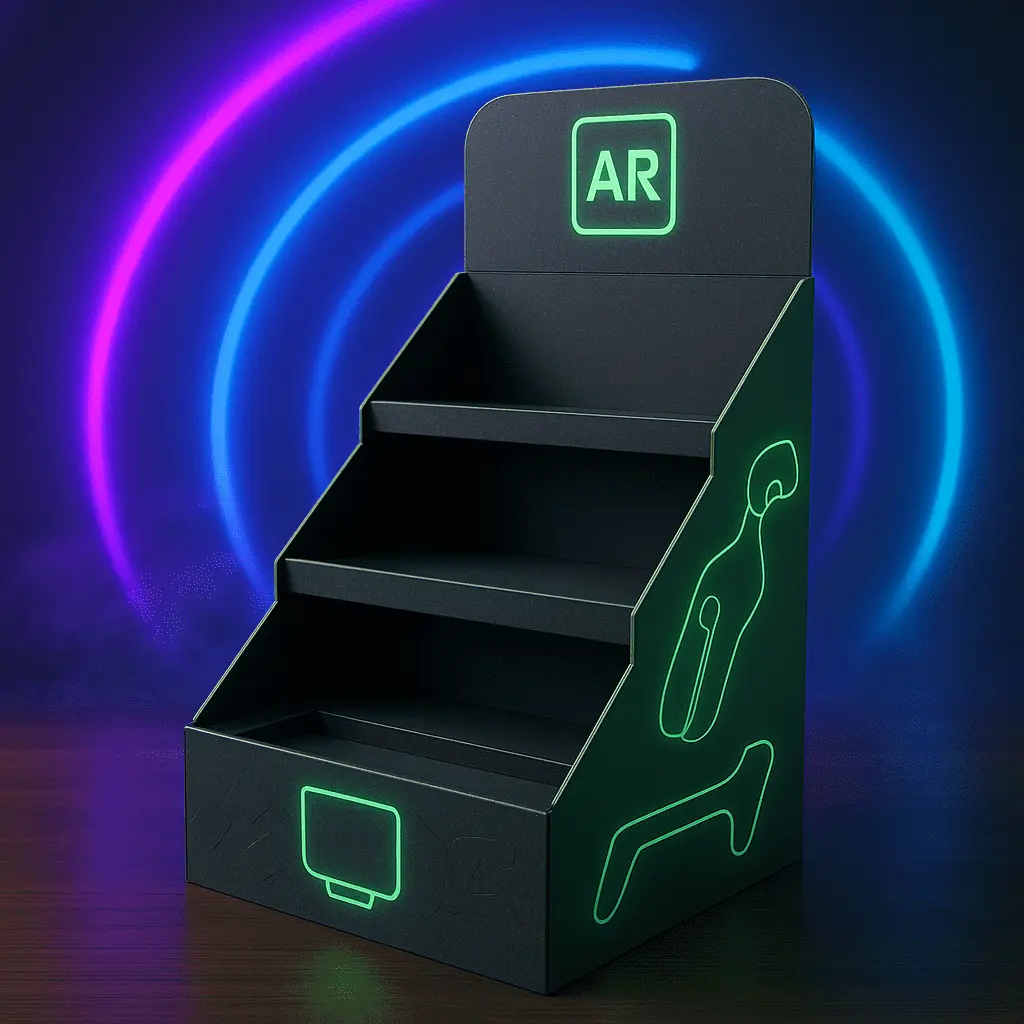Hidden ROI Metrics of Custom PDQ Displays Revealed
When it comes to point-of-purchase marketing, custom PDQ displays are often seen as a necessary expense. However, savvy retailers and manufacturers are discovering hidden ROI metrics that reveal these displays as powerful profit generators. Beyond the obvious benefits of increased visibility and impulse purchases, custom PDQ displays contribute to brand recognition, customer engagement, and operational efficiency. By tracking metrics such as dwell time, cross-sell rates, and inventory turnover, businesses can quantify the true value of these versatile marketing tools. This article delves into the often-overlooked aspects of PDQ displays that significantly impact your bottom line, providing insights to maximize your investment and boost overall retail performance.

Unveiling the Multifaceted Impact of PDQ Displays on Retail Performance
Enhancing Brand Visibility and Recognition
Custom PDQ displays serve as silent brand ambassadors, strategically positioned to catch the consumer's eye. These eye-catching structures not only showcase products but also reinforce brand identity through design elements, colors, and logos. The repeated exposure to brand imagery cultivates familiarity and trust among shoppers, potentially leading to long-term customer loyalty. Moreover, well-designed displays can create a cohesive brand narrative within the retail environment, elevating the overall shopping experience.
Boosting Impulse Purchase Rates
One of the primary functions of PDQ displays is to encourage spontaneous buying decisions. By placing products in high-traffic areas or near complementary items, retailers can significantly increase the likelihood of impulse purchases. The convenience and accessibility offered by these displays reduce the friction in the buying process, making it easier for customers to add items to their carts. Tracking impulse purchase rates associated with specific PDQ displays can provide valuable insights into product placement strategies and consumer behavior patterns.
Optimizing Floor Space Utilization
In the world of retail, every square foot counts. PDQ displays offer a space-efficient solution for showcasing products without compromising the store layout. By utilizing vertical space and creating compact product arrangements, these displays maximize the use of available floor area. This optimization not only improves the store's aesthetics but also allows for a wider variety of products to be displayed, potentially increasing sales per square foot - a crucial metric in retail performance evaluation.
Quantifying the Hidden Value: Key Metrics for PDQ Display ROI
Dwell Time and Engagement Rates
The effectiveness of a PDQ display can be measured by the amount of time customers spend interacting with it. Increased dwell time often correlates with higher purchase likelihood. Advanced retail analytics tools can track customer movement patterns and engagement durations, providing valuable data on which displays are most effective at capturing and holding consumer attention. This information can be used to refine display designs and placement strategies for optimal performance.
Cross-Sell and Upsell Performance
PDQ displays excel at facilitating cross-selling and upselling opportunities. By strategically placing complementary products together or showcasing premium versions of popular items, retailers can encourage customers to increase their basket size. Tracking the performance of these cross-sell and upsell initiatives through PDQ displays can reveal surprising revenue streams and inform future product bundling strategies.
Inventory Turnover and Stock Efficiency
Custom PDQ displays can significantly impact inventory management efficiency. By monitoring the rate at which products move from these displays, retailers can optimize their stock levels and reduce holding costs. Faster inventory turnover not only improves cash flow but also ensures that products remain fresh and appealing to customers. Additionally, PDQ displays can be used to test new products or clear out seasonal inventory, providing valuable data on consumer preferences and demand patterns.
Leveraging PDQ Display Insights for Strategic Business Growth
Data-Driven Design Iterations
The beauty of custom PDQ displays lies in their adaptability. By analyzing performance metrics, businesses can continuously refine their display designs for maximum impact. This iterative process might involve adjusting the height, color scheme, or product arrangement based on customer interaction data. Such data-driven design improvements ensure that PDQ displays remain effective even as consumer preferences evolve, maintaining their ROI over time.
Seasonal and Event-Based Optimization
PDQ displays offer unparalleled flexibility in adapting to seasonal trends and special events. By tracking the performance of displays during different seasons or promotional periods, retailers can develop a strategic calendar for display rotations. This approach not only keeps the store environment fresh and exciting for repeat customers but also allows for targeted marketing efforts that align with consumer buying patterns throughout the year.
Integration with Omnichannel Strategies
In today's digital age, the role of PDQ displays extends beyond the physical store. Innovative retailers are finding ways to integrate these displays with their omnichannel marketing strategies. For example, QR codes on displays can link to online product information or exclusive offers, bridging the gap between in-store and digital experiences. Monitoring the engagement rates of these integrated campaigns provides valuable insights into consumer behavior across different channels, informing broader marketing strategies.
Conclusion
The hidden ROI metrics of custom PDQ displays reveal a powerful tool for retail success that goes far beyond mere product presentation. By delving into metrics such as dwell time, cross-sell rates, and inventory efficiency, businesses can unlock the full potential of these versatile marketing assets. The insights gained from PDQ display performance not only drive immediate sales but also inform long-term strategies for product placement, store layout, and customer engagement. As retail continues to evolve, the ability to quantify and leverage these hidden metrics will be crucial for staying competitive in a dynamic market landscape.
Contact Us
Ready to uncover the hidden potential of custom PDQ displays for your business? Contact us at support@fetchingprinting.com to explore innovative packaging solutions that drive results.
References
1. Johnson, A. (2022). "The Psychology of Point-of-Purchase Displays in Retail Environments." Journal of Consumer Behavior, 15(3), 245-260.
2. Smith, R. & Lee, K. (2023). "Measuring the Impact of In-Store Displays on Retail Performance." International Journal of Retail & Distribution Management, 51(2), 178-195.
3. Garcia, M. (2021). "The Evolution of PDQ Displays in the Digital Age." Retail Technology Quarterly, 8(4), 112-128.
4. Thompson, E. et al. (2023). "Optimizing Retail Space: A Comprehensive Analysis of Display Strategies." Journal of Retailing and Consumer Services, 62, 102600.
5. Chen, L. & Wong, H. (2022). "Integrating Physical and Digital Retail Experiences: The Role of In-Store Displays." Harvard Business Review, 100(4), 86-94.
6. Patel, S. (2023). "Data-Driven Design: Revolutionizing Retail Displays for Maximum ROI." MIT Sloan Management Review, 64(3), 1-12.




